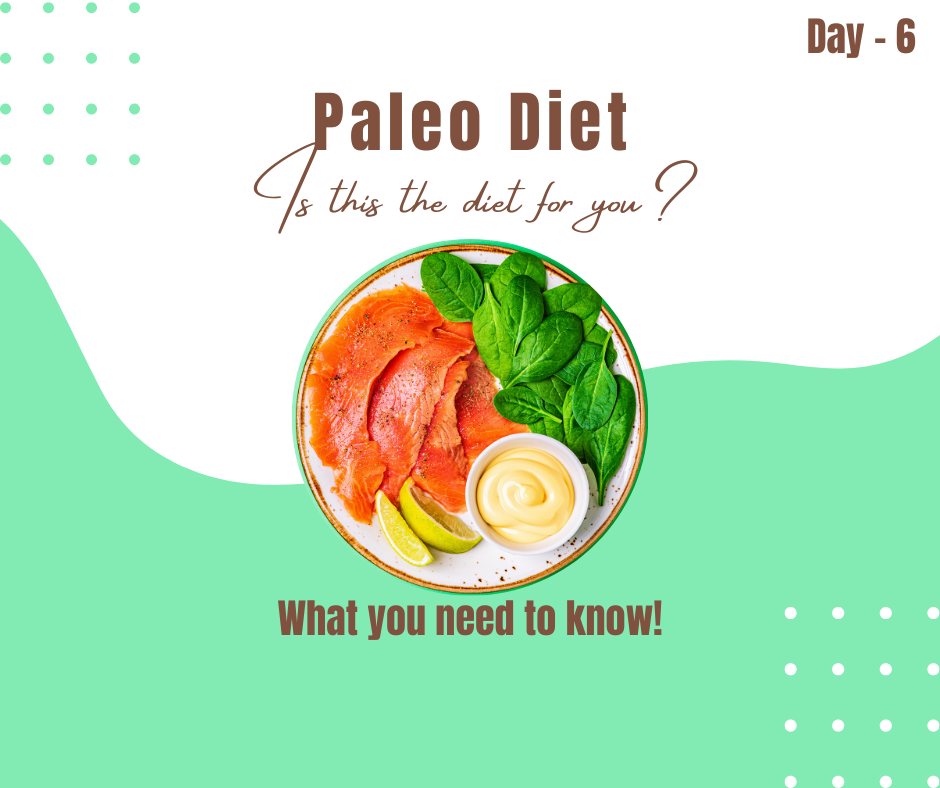Congratulations on completing day six of your fitness and wellness challenge! Today, we're going to dive into another fan favorite diet, The Paleo Diet. Again, it's important to note that everyone's body is different, and what works for one person may not work for another.
The paleo diet is based on the idea of eating like our ancient ancestors, who were hunter-gatherers. The goal of the diet is to consume foods that were available to our ancestors, such as meats, vegetables, fruits, and nuts, while avoiding processed foods and grains. In this blog post, we will dive into the ins and outs of the paleo diet, including tips, tricks, recommended foods, and calorie intake.
What is the paleo diet?
The paleo diet is based on the premise that humans evolved to eat a certain way, and that the foods we eat today are not optimal for our health. The diet focuses on whole, unprocessed foods that were available to our ancestors, such as meats, vegetables, fruits, and nuts.
Foods to avoid on the paleo diet include grains, legumes, dairy, processed foods, and refined sugar. This is because these foods were not available to our ancestors and can cause inflammation and other health problems.
Tips for starting the paleo diet:
-
Do your research: Before starting the paleo diet, it's important to do your research and learn as much as you can about the diet. This will help you understand what to expect and how to make the necessary changes to your diet.
-
Plan your meals: Planning your meals ahead of time can help ensure that you're consuming a balanced and nutritious diet. Look for paleo-friendly recipes and plan out your meals for the week.
-
Shop for the right foods: When shopping for food on the paleo diet, focus on whole, unprocessed foods like meats, vegetables, fruits, and nuts. Avoid processed foods, grains, legumes, and dairy.
-
Be mindful of your calorie intake: While the paleo diet is not necessarily a calorie-restricted diet, it's still important to be mindful of your calorie intake. Eating too many calories can lead to weight gain, even on a healthy diet like paleo.
Recommended foods on the paleo diet:
-
Meat: Beef, chicken, pork, and other lean meats.
-
Seafood: Salmon, tuna, and other fatty fish.
-
Vegetables: Leafy greens, broccoli, cauliflower, carrots, and sweet potatoes.
-
Fruits: Berries, apples, oranges, and other fruits.
-
Nuts and seeds: Almonds, cashews, sunflower seeds, and pumpkin seeds.
Calorie intake on the paleo diet:
The number of calories you should consume on the paleo diet depends on your individual needs and goals. In general, you should aim for a calorie deficit if your goal is weight loss. This means consuming fewer calories than your body burns each day.
To determine your calorie needs, you can use an online calculator or consult with a healthcare professional. It's important to ensure that you're consuming enough calories to support your activity level and overall health.
In conclusion, the paleo diet can be a successful way to improve your health and overall wellbeing. However, it's important to approach the diet with caution and make sure that you're consuming a balanced and healthy diet. By following the tips and recommendations outlined in this blog post, you can set yourself up for success on the paleo diet. Remember, always listen to your body and consult with a healthcare professional before making any significant dietary changes.
Remember, the key to success in your fitness and wellness journey is to find a sustainable approach that works for you and your lifestyle. Keep up the great work and get ready to conquer day seven!

